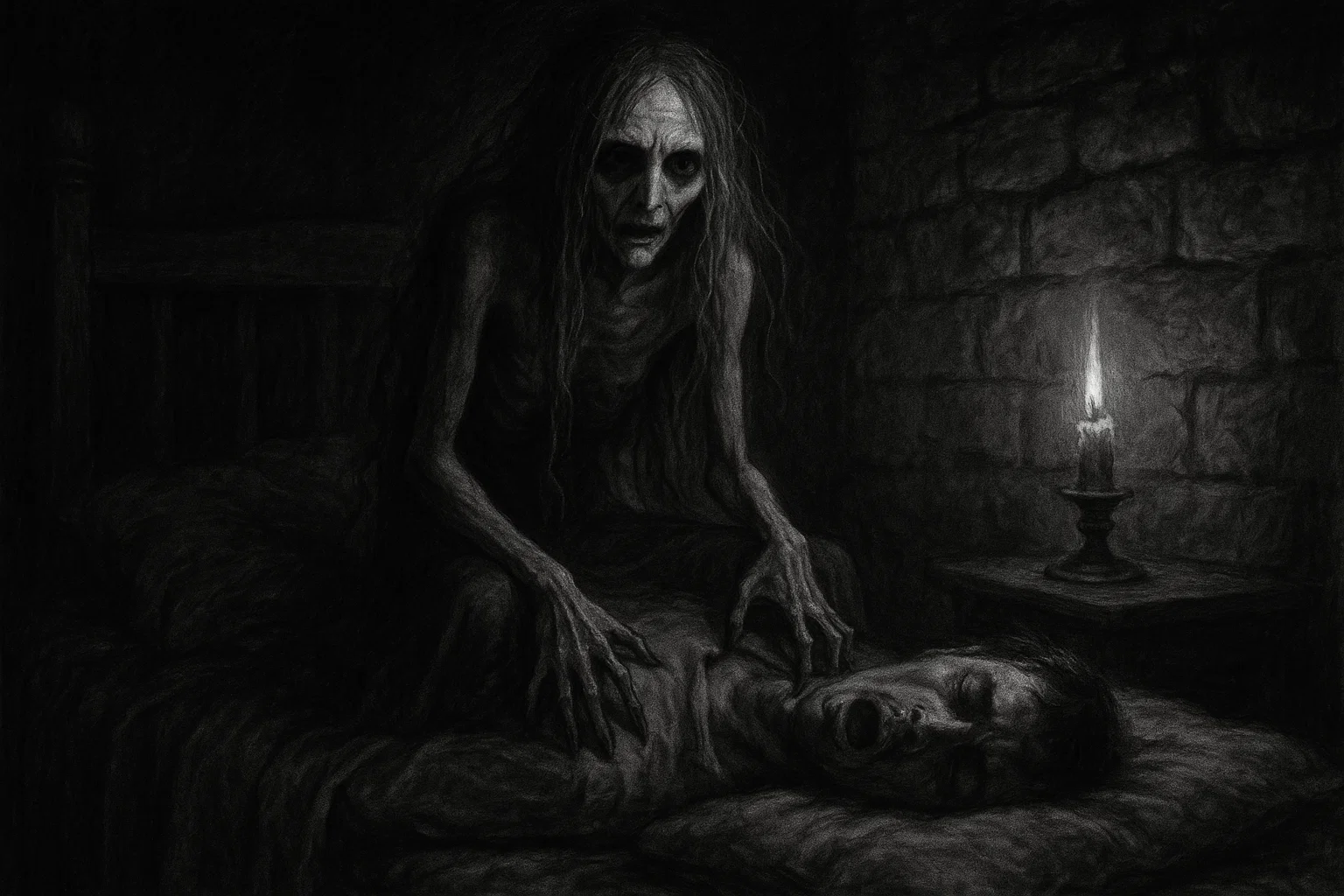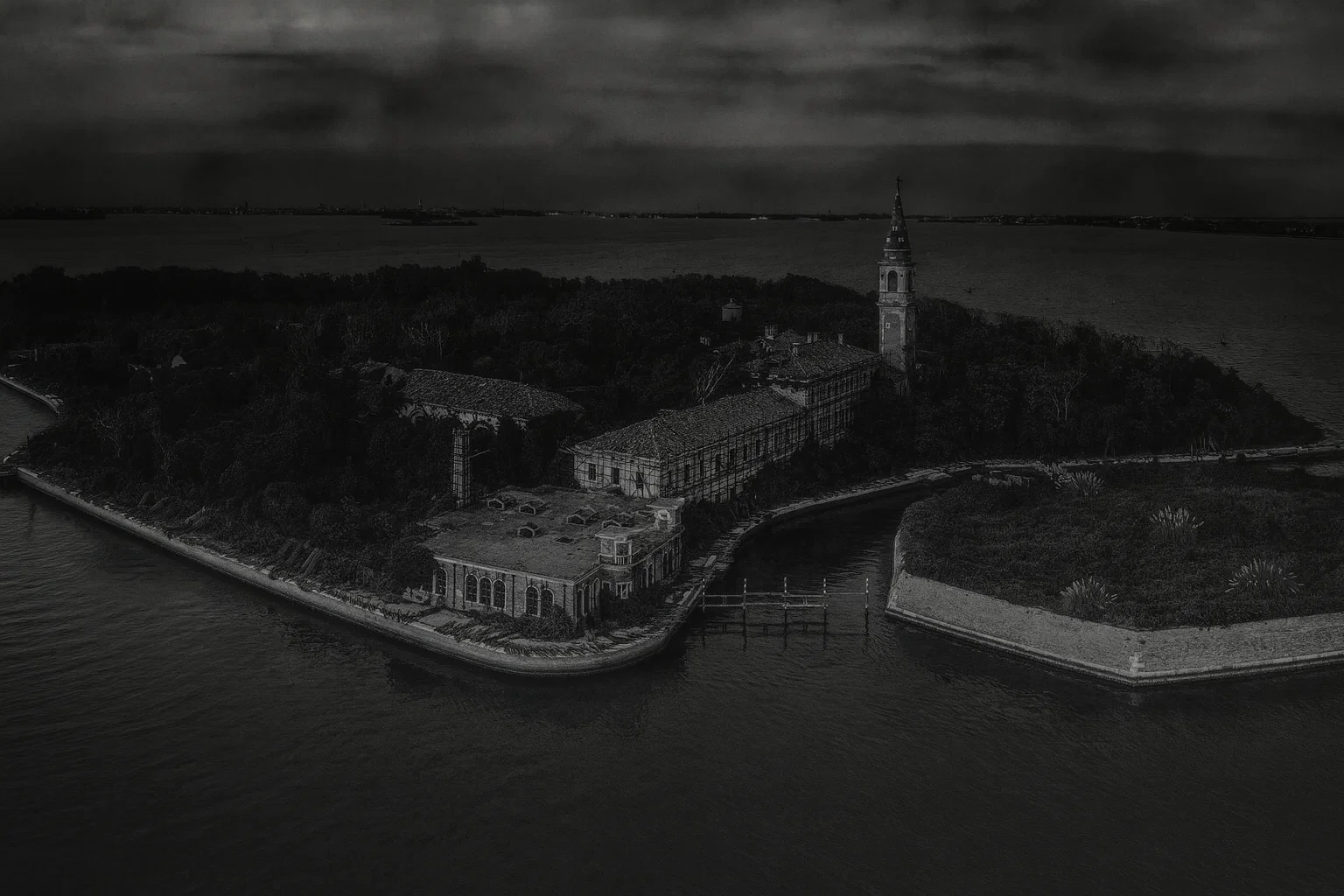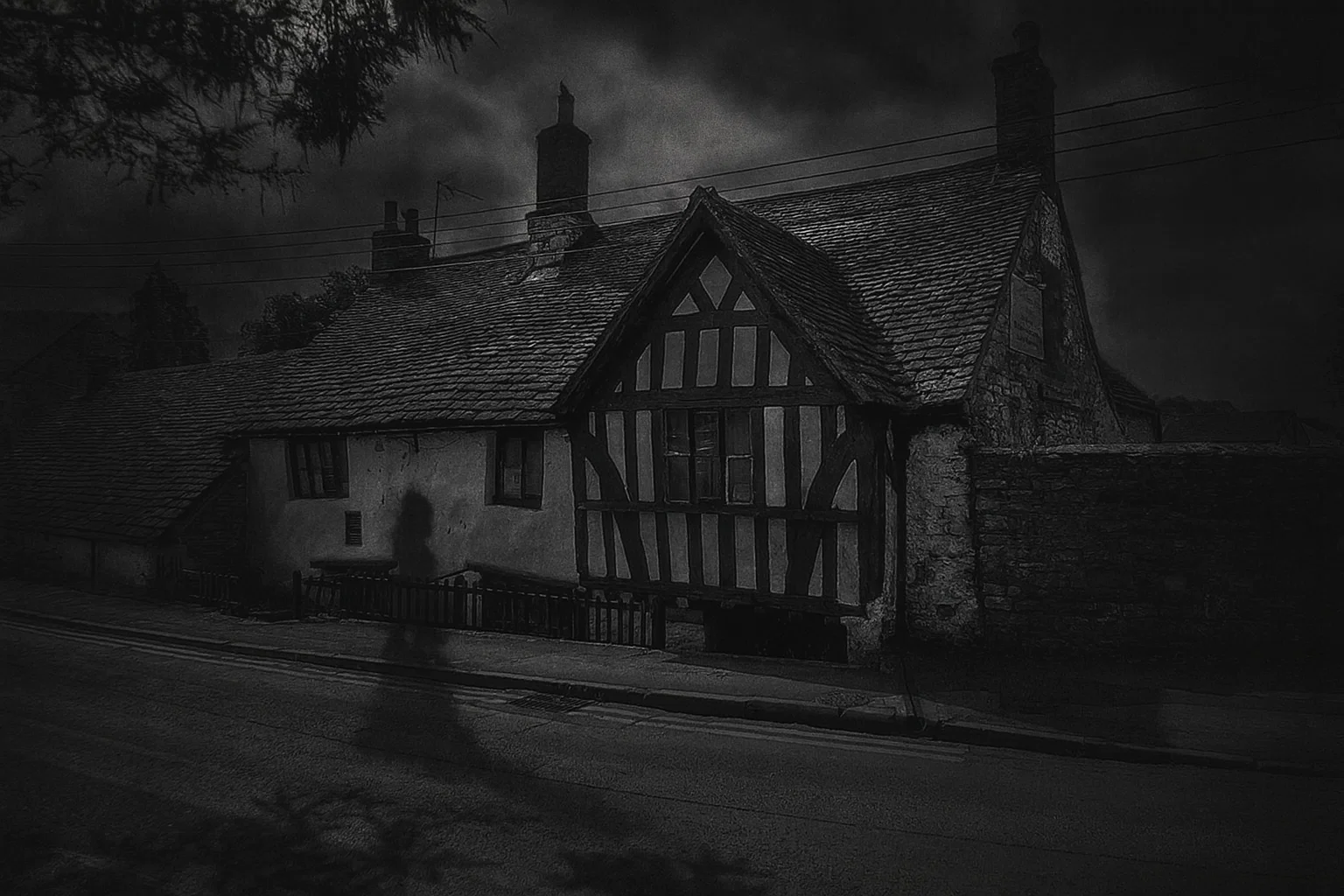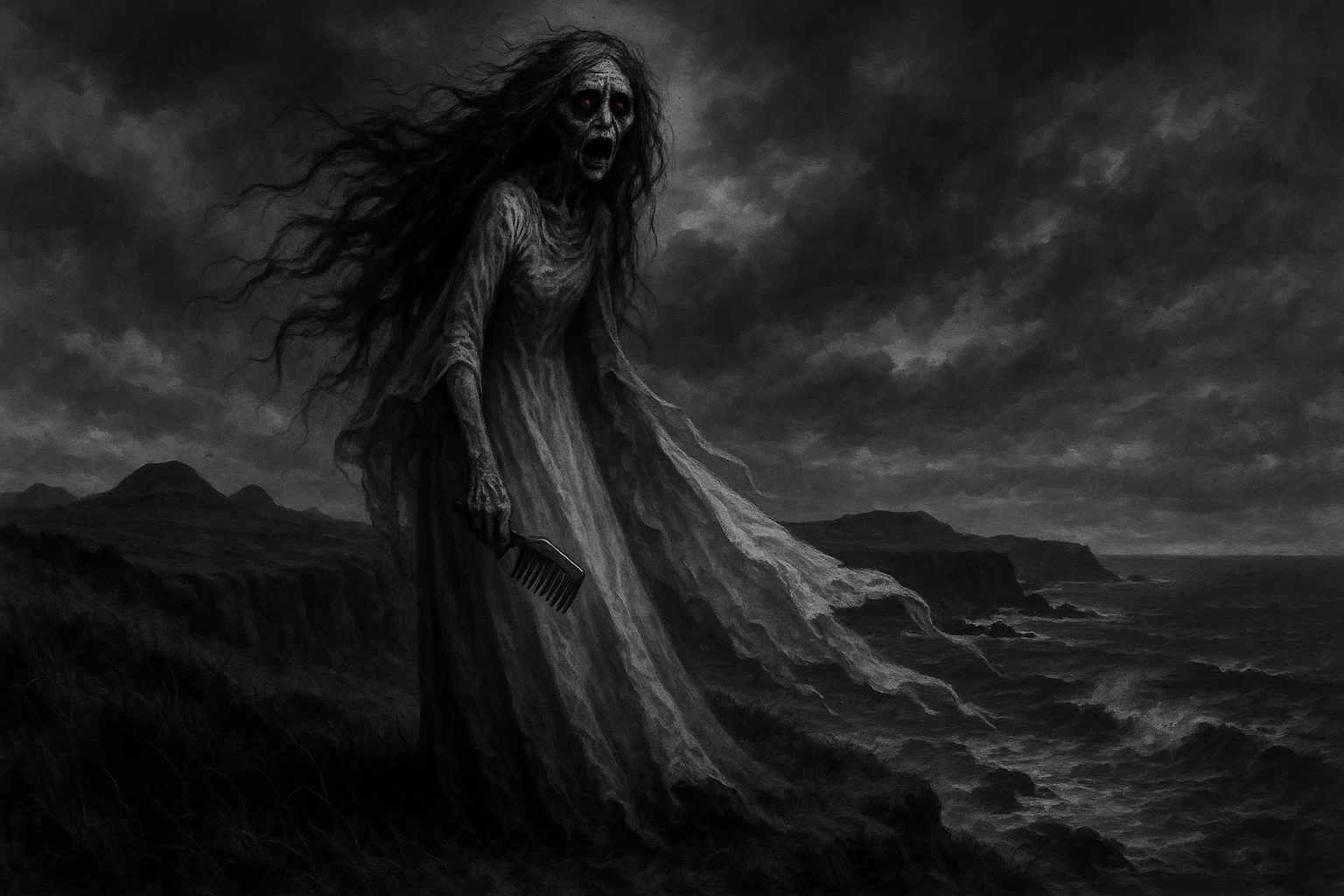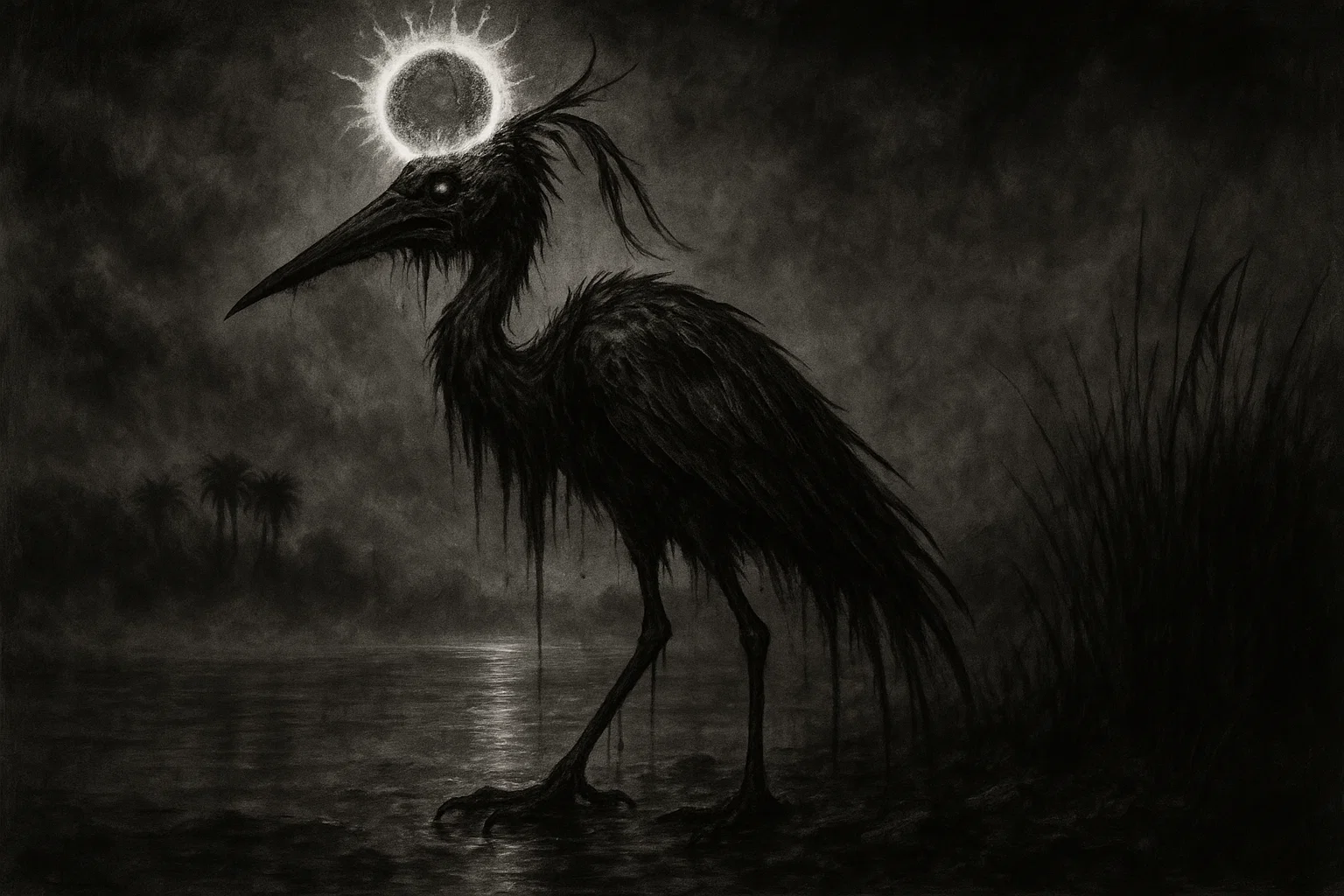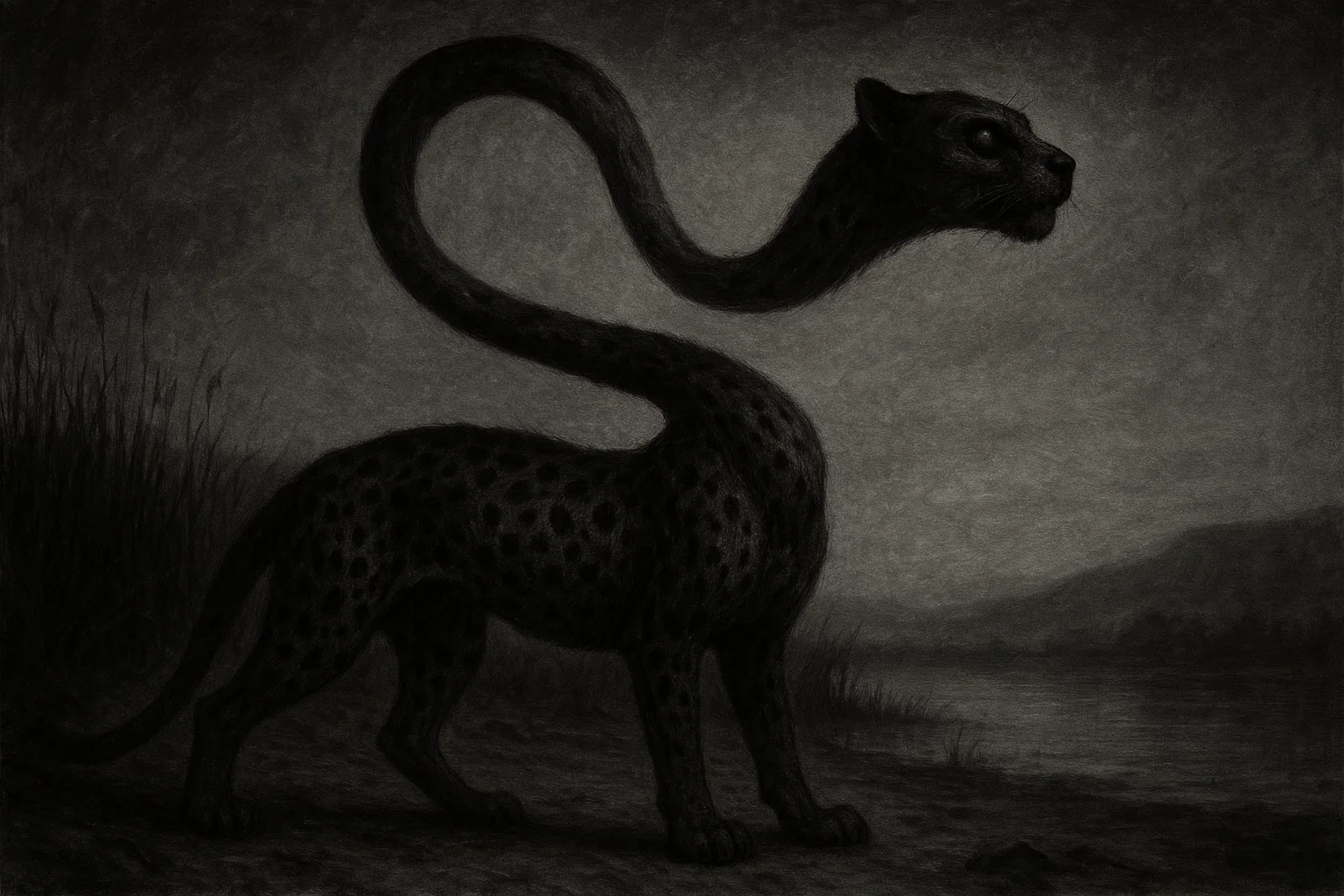Mare is a malevolent demonic spirit in Germanic and Slavic folklore. The creature sits on the chests of sleeping individuals to induce terrifying dreams and a sense of suffocation.
Often depicted as a shadowy female entity, the Mare embodies the dread of the night, linking ancient beliefs to modern understandings of sleep disturbances (like sleep paralysis and vivid nightmares).
Summary
Key Takeaways
| Attribute | Details |
|---|---|
| Names | Mare, Mara, Mære; from Old English mære and Old Norse mara, linked to Proto-Indo-European mer- meaning “to harm” or Greek moros “doom” |
| Nature | Supernatural spirit or goblin, often female, associated with evil and oppression |
| Species | Spectral |
| Appearance | Shadowy female figure, sometimes shapeshifting into animals like cats or horses; may appear as a hag, moth, or wisp of hair |
| Area | Northern and Central Europe, including Scandinavia, Germany, Poland, Serbia, and Iceland |
| Creation | Soul of a living or dead person, such as an unmarried woman, sinful individual, or one wronged; sometimes born from curses or black magic during birth |
| Weaknesses | Repelled by light, crossed objects like brooms and axes, prayers, amulets, or offerings like bread and butter; trapping via entry points like keyholes |
| First Known | 13th century, Ynglinga saga by Snorri Sturluson |
| Myth Origin | Germanic and Slavic pagan beliefs, tied to sleep paralysis and nocturnal fears |
| Strengths | Inducing nightmares, shapeshifting, entering homes through small openings, riding animals to exhaustion |
| Time Active | Nocturnal, attacking during sleep |
| Diet | Feeds on fear, anxiety, and life force through nightmares |
| Protection | Hanging magpies, upside-down brooms, or reciting charms before bed |
Who or What Is a Mare?
The Mare is often described as a creepy, nightmarish being that sneaks into people’s dreams to create feelings of fear and anxiety.
In stories from Germanic cultures, it takes the form of a woman who targets the most vulnerable. She sits on the chests of sleepers, whispering frightening thoughts that linger even after they wake up.
These tales place the Mare in rural homes and barns throughout Scandinavia and beyond. She is said to slip through small openings, like cracks or keyholes, to find her resting spot. Those who encounter her often wake up sweating, with racing hearts, haunted by terrifying visions that seem too real.
Ever Walk Into a Room and Instantly Feel Something Watching You?
Millions have used burning sage to force out unwanted energies and ghosts. This concentrated White Sage & Palo Santo spray does the same job in seconds – just a few spritzes instantly lifts stagnation, breaks attachments, and restores peace most people feel immediately.
Etymology
The name Mare traces its roots deep into Proto-Germanic marōn, which in Old English evolved into mære, denoting a crushing demon of the night. This term, unrelated to the equine “mare,” originates from the Indo-European root mer-, implying “to rub away” or “to harm,” evoking the spirit’s suffocating press that erodes breath and sanity.
In Old Norse, it becomes “mara,” a goblin that “rides” victims, giving rise to compound words like Swedish mardröm (“mare-dream”) and Danish mareridt (“mare-ride”), where the act of trampling highlight the physical agony.
Hungarian folklorist Éva Pócs links it to Greek moros, “doom,” suggesting a fatal shadow over sleepers. In contrast, others see ties to Slavic mora, a ghost that strangles through keyholes.
Variations abound—German Mahr for the nightmare fiend, Polish zmora for the soul-wisp that haunts the living. These shifts reflect phonetic drifts across dialects, from Icelandic martröð (“mare-tread”) to Serbian noćnica (“night creature”).
You May Also Like: The 12 Creepiest Halloween Horror Stories Ever Told
What Does the Mare Look Like?
Descriptions of the Mare vary across sources, but a core image persists: a lithe, shadowy female form, elusive and intangible, cloaked in darkness that blends with the night.
In Germanic tales, it often appears as a hag with tangled hair, her weight belying a frail silhouette, eyes gleaming like embers in a gaunt face marked by malice.
Slavic accounts paint it as a wisp—perhaps a strand of hair or a moth fluttering through slits in the door—before solidifying into a woman with long, disheveled locks that snag like snares. The Mare might also mimic a black cat slinking across the bed or a horse galloping unseen, leaving sweat-lathered beasts in barns.
Icelandic lore from the Eyrbyggja saga depicts it as a sorceress’s projection, animalistic in transit—frog, hare, or bird—yet human in its perch, pressing with invisible force.
Mythology
The Mare weaves into the fabric of pre-Christian Germanic and Slavic mythologies as a nocturnal predator, embodying the perils of unguarded sleep in a world teeming with unseen foes.
Its origins predate written records, likely arising from pagan explanations for sleep paralysis and equine exhaustion, where twisted pines—called martallar or “mare-pines”—bear witness to its wrathful rides.
In Sámi traditions, kin spirits like Deattán transform into birds to mimic the Mare’s chest-sitting assaults, blending with broader Indo-European motifs of doom-bringers.
Earliest attestations date to 13th-century Norse texts, yet the belief predates them, intertwined with concepts of the soul’s nocturnal wanderings.
The Ynglinga saga introduces the Mara as a summoned curse, a Finnish witch’s tool that crushes kings in their beds, fatal in its press.
By the Late Middle Ages, German chronicles blur it with the Alp, its mother in some tales. At the same time, Polish lore ties it to mora—restless souls of the unmarried or wicked, departing bodies as ethereal pests.
Legends
The Death of King Vanlandi
In the ancient kingdom of Uppsala, there lived a king named Vanlandi Sveigðisson. He was known for his bold ambitions and fair leadership.
One day, he set sail on a grand journey to the faraway land of Finland, where he married a beautiful, strong-willed woman named Drífa. He promised to return to her in three years. However, time passed, and Vanlandi became caught up in the troubles of the state and war, spending almost a decade in Sweden.
Back in Uppsala, Drífa felt abandoned and heartbroken as the years dragged on. Angry and desperate for revenge against the husband who had left her, she sought the help of a mysterious witch named Huld. Huld was rumored to possess dark magic, and in exchange for gold and riches, Drífa asked her to bring misfortune to Vanlandi.
With a wicked smile, Huld summoned a terrifying spirit called a Mare—a creature that feeds on the fears of sleeping people. She sent this spirit to haunt the unsuspecting king as he lay in his luxurious bed in Uppsala.
One night, while the wind howled outside, Vanlandi fell into a deep sleep. But soon, he was jolted awake in a panic, screaming about a dreadful vision of the Mare. It was a nightmarish figure that seemed to crush him, representing the heavy weight of his broken promises.
His loyal servants rushed to help him, trying to hold him down and save him from the invisible tormentor.
But the Mare was too powerful, gripping him with an unimaginable force that threatened to break him apart. No matter how hard they tried to restrain him, the nightmare only grew stronger, and with a terrifying climax, it crushed him, sealing his tragic fate.
And so, King Vanlandi met his end, a victim of dark magic and the consequences of his choices. His death became a sorrowful tale in the kingdom of Uppsala, a lasting reminder of the dire effects of betrayal and the mysterious forces that linger in the world.
You May Also Like: 10 Scary Campfire Stories That’ll Keep Everyone Awake All Night
The Night-Rider
In the mysterious valleys of western Iceland, Sorceress Geirrid found herself caught in a swirl of accusations related to dark magic after a troubling event involving Gunnlaug Thorbjornsson.
Gunnlaug, a well-respected member of the community, woke up one night in pain and confusion, his body covered in deep bruises that seemed like they were caused by something unnatural.
People began to tell strange stories about Geirrid wearing an unusual walrus skin. This ancient garment was rumored to give her the power to travel between the living world and the spirit realm, transforming her into a creature called a marlíðendr, or night-rider.
This powerful being was said to ride through people’s dreams, attacking them while they slept, leaving them startled and hurt upon waking.
Her nightly adventures were recounted with vivid details, painting a picture of her ghostly figure pressing down on her victims’ chests as she unleashed her fury. The marks left behind looked eerily like the scars of soldiers who had just returned from battle.
Those who faced her were not just frightened but became overwhelmed with terror as they discovered the mysterious bruises that told the tale of a dark force invading their nights.
The Polish Soul-Wisp
In small villages in Poland, it’s said that a person’s spirit can separate from their body at night and transform into something known as a mora—a flickering light or a wisp that can slip through keyholes to disturb their loved ones.
One story recounts the restless spirit of a single woman who, due to her untimely death, couldn’t find peace. Every night, her spirit would wind itself around her brother’s throat while he slept, causing him to wake up gasping for breath with strange marks on his neck.
Neighbors reported seeing shadows shaped like moths at his window. The village elders advised him to scratch a cross on his pillow and block the door with a broom.
After following these steps, the spirit finally left him alone, allowing both him and the spirit to find peace, and the village was free from further nighttime disturbances.
You May Also Like: Strzyga: The Bloodthirsty Demon of Slavic Folklore
Mare vs Other Monsters
| Monster Name | Origin | Key Traits | Weaknesses |
|---|---|---|---|
| Alp | Germanic (Germany, Austria) | Shapeshifts into animals; sits on chest causing nightmares and suffocation; drinks blood from corners of mouth | Iron objects, salt, invoking saints; light exposure |
| Incubus | Medieval European (Latin roots) | Male demon seduces women in sleep; drains life force via intercourse; causes erotic nightmares | Religious prayers, holy water; dawn’s light |
| Succubus | Medieval European (Latin roots) | Female demon tempts men in dreams; feeds on semen or energy; induces lustful terrors | Iron crosses, garlic; morning rooster crow |
| Tokolosh | Zulu (Southern Africa) | Dwarf-like water spirit; attacks sleepers with sexual assault; invisible to most | Elevated beds on bricks; protective charms |
| Popobawa | Swahili (Zanzibar, Tanzania) | Shapeshifting bat-man; nocturnal rapist causing fear epidemics; visible only to victims | Communal announcements; staying indoors in groups |
| Karabasan | Turkish folklore | Heavy spirit presses on chest; enters via keyholes; linked to jinn possession | Reciting Quran verses; placing knife under pillow |
| Lidérc | Hungarian folklore | Fiery light or chicken-form; drains energy through seduction; hatches from black egg | Empty pots to trap; not looking directly at it |
| Mora | Slavic (Poland, Serbia) | Living soul as moth or hair; strangles sleepers; tied to Polish plait disease | Cross on pillow; broom behind door |
| Drude | Germanic (Bavaria, Swabia) | Elf-like night hag; causes pressure and bad dreams; related to elf-shot illnesses | Swapping shoes at bedside; herbal smokes |
| Boto | Amazonian (Brazilian indigenous) | Dolphin shapeshifter; seduces women at rivers; impregnates with cursed children | Avoiding water at night; silver jewelry |
The Mare shares a common theme with other nighttime creatures that bring fear. However, it differs because it doesn’t focus on seduction; instead, it emphasizes pure fear.
Like other Germanic folklore beings, the Mare can change shape to sneak into homes. Still, it doesn’t have the bloodsucking nature of some or the connections to elves as others do.
Unlike the Incubus and Succubus (which are known for their sexual drains), the Mare is all about psychological torment, haunting your mind instead of your body.
Similar creatures in other cultures, like the Tokolosh and Popobawa, also reflect deep fears of unwanted nighttime experiences. The Mare, however, suggests ways to protect yourself—using things like crossed tools and the light of dawn—focusing more on personal home protection than on community rituals.
You May Also Like: Sleipnir: The Terrifying Eight-Legged Horse of Norse Mythology
Powers and Abilities
The Mare wields influence over the fragile border of wakefulness, harnessing the night’s veil to invade and dominate.
Its primary domain lies in dream-weaving, twisting subconscious fears into vivid horrors that linger, sapping strength and fostering lasting anxiety.
This spirit excels at physical mimicry of dread, manifesting as an intangible weight that mimics suffocation, often aligning with real ailments like sleep paralysis.
Across lore, the Mare’s reach extends beyond humans to beasts and even trees, entangling manes or branches in “mare-knots” as signs of its passage, underscoring a broad predatory instinct tied to chaos and unrest.
Mare’s powers and abilities include:
- Nightmare Induction: Crafts terrifying visions from victims’ memories, amplifying anxiety and causing emotional exhaustion upon waking.
- Chest Compression: Applies invisible pressure to simulate strangling or drowning, leading to gasps, sweats, and temporary paralysis.
- Shapeshifting: Assumes forms like cats, moths, hares, or wisps to slip through keyholes or cracks undetected.
- Entry Manipulation: Traverses small openings—doors, windows, or walls —evading barriers to pursue prey.
- Energy Drain: Siphons vitality through prolonged visits, leaving hosts weakened, pale, and prone to illness.
- Animal Riding: Mounts horses or livestock at night, exhausting them into lathered, trembling states by dawn.
- Fear Amplification: Heightens ambient terror, turning ordinary slumbers into battlegrounds of dread and hallucination.
Can You Defeat a Mare?
Folklore provides several interesting ways to protect against the Mare.
One common method is to seal entry points in your home. For example, placing a knife, an awl (a pointed tool), or a broom upside-down behind your door can tangle the Mare and prevent it from entering. Another technique is crossing an axe and a broom at your doorstep to block its path.
In some traditions, particularly in Pomerania, people switch their slippers around—putting the right slipper on the left foot and vice versa—before going to bed, which is said to confuse the Mare and send it in circles, making it unable to find its way.
Offering food can also help keep the Mare away. Leaving a bowl of buttered bread and cold milk out at dawn serves as an invitation for the Mare to come and eat. The belief is that if it accepts the offering, it will leave for good.
Prayers can be powerful, too. In one German tradition, people call upon a higher power, like the Holy Trinity, to help break the Mare’s hold. Wearing special amulets, such as blessed pendants or stones with holes, can provide protection through the power of faith.
If you have animals, hanging a slain magpie or reciting certain phrases before sunset may help deter the Mare from riding them at night.
If the Mare continues to be a problem, it might be connected to a person. In this case, confronting that person through naming or performing a ritual can help cut the connection and restore peaceful nights.
You May Also Like: Huldra: The Beautiful Forest Demon of Scandinavia
Conclusion
The Mare stands as a powerful symbol of folklore, illustrating how stories help us name and confront our deepest fears.
From tales of Norse kings who fell prey to nightmares to Slavic villagers who tied brooms together to ward off evil spirits, its history shows how people across a continent have shared a common anxiety about sleep.
While modern science explains these fears as just results of our brains misfiring during sleep, the stories and beliefs about the Mare continue to resonate. They remind us that some mysteries cannot be easily explained.

